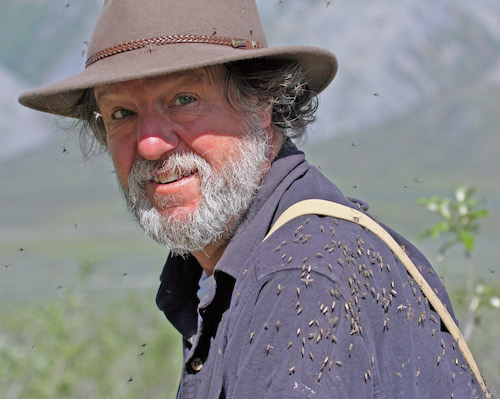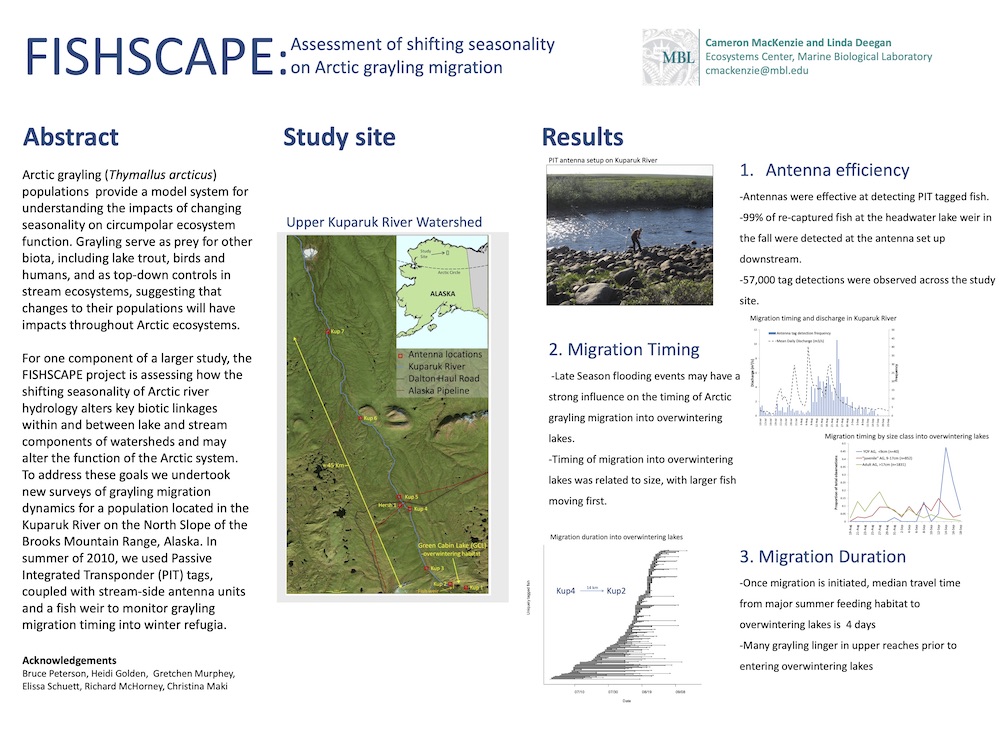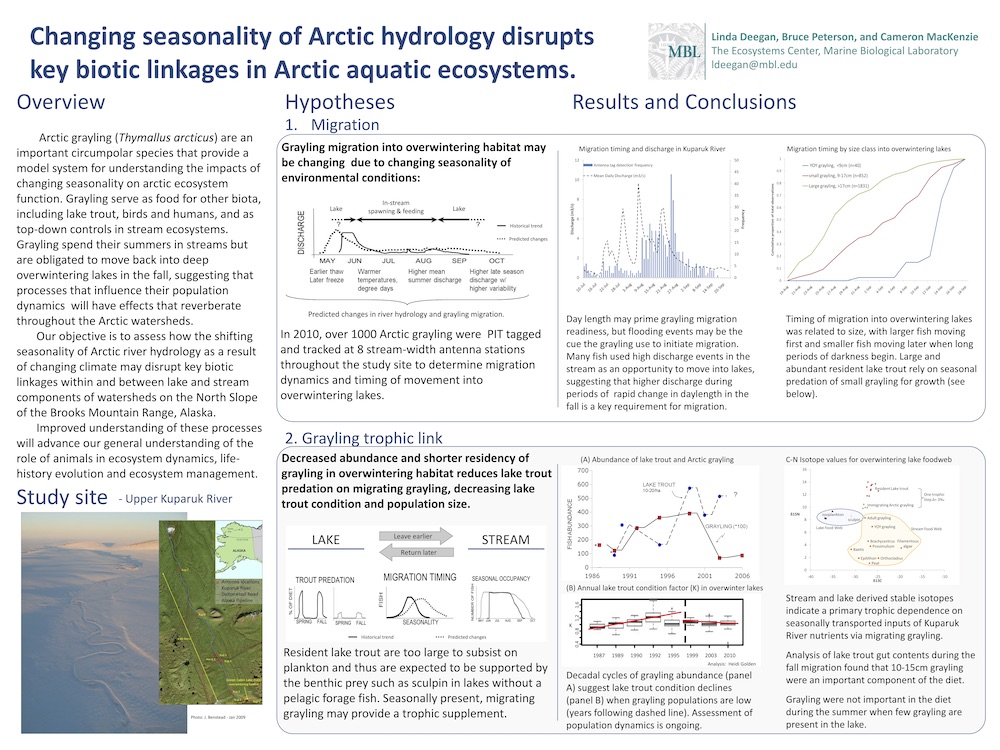Our goal is to determine how the shifting seasonality of Arctic river hydrology alters key biotic linkages within and between lake and stream components of watersheds and may alter the function of the Arctic system. Arctic grayling (Thymallus arcticus) is a quintessential, circumpolar Arctic species that provides a model system for understanding the impacts of changing seasonality on arctic ecosystem function because an interconnected and varied landscape (large tundra rivers, small streams and lakes) is required to maintain their population viability. Changes to environmental conditions that disrupt their migration will affect the system-level function of aquatic ecosystems. Grayling serve as food for other biota, including lake trout, birds and humans, and as top-down controls in stream ecosystems suggesting that changes to their populations will have effects that reverberate throughout the coupled river-lake system. The scale and pace of the changes now impacting tundra lakes and streams imparts an urgency to understand how they are linked and how they function as a system.
We are addressing 4 main questions: 1) How are seasonality, rate and distance of grayling migration affected by climate change? 2) Are the seasonality of life-cycles, life-history and attributes of stream insect populations changing in response to climate change? 3) How does changing seasonality of river discharge interact with insect production to affect availability and transfer of stream production to grayling? 4) What is the effect of climate driven disruption of the migratory link on the structure and function of winter refugia?
We are examining the implications of changing climate on key biotic linkages by: 1) retrospective studies of long-term databases of stream flow and temperature and insect and fish productivity and migration, 2) new work on controls on seasonality of migration, stream productivity and trophic transfer and 3) new work on the feedbacks between changing open water season and food webs in winter refugia. These findings will be integrated into a systems-level model, using grayling as the ‘currency’, to evaluate the effects of altered linkages among system components on system level functioning. Improved understanding of the interdependence of lake and stream productivity through biotic linkages will advance our general understanding of landscape ecology, the role of animals in ecosystem dynamics, life-history evolution and ecosystem management of fisheries.
Project Location
Dates
-Members
Principal Investigator

Principal Investigator

Co-Principal Investigator



